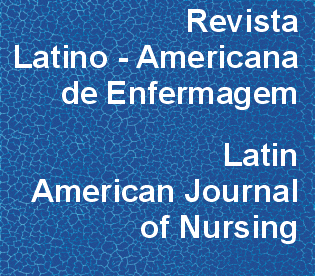Nursing dignoses and most common collaboration problems in high-risk pregnancy
DOI:
https://doi.org/10.1590/S0104-11692004000200005Keywords:
pregnancy, high-risk, nursing diagnosis, women's healthAbstract
This study identified the demographic profile, obstetric and clinical diagnoses, nursing diagnosis and most common collaboration problem among pregnant women subject to high-risk at a hospital in São Paulo, Brazil. Data were collected by means of a form based on Gordon's Functional Health Patterns. Nursing diagnoses were determined on the basis of the NANDA (North American Nursing Diagnosis Association) taxonomy. The nursing diagnoses found in 50% or more of the pregnant women were: risk for infection (90.1%), altered health maintenance (84.5%), altered comfort (80.3%), risk of ineffective breastfeeding (59.2%), altered sexuality patterns (52.1%), fear (52.1%) and pain (50.7%). The collaboration problem found in 50% or more of the cases was: Potential Complication: Preterm labor (62.0%), Potential Complication: Maternal tachycardia (54,9%) and Potential Complication: Hypotension (54,9%). Thus, these results will allow us to guide the nursing care rendered to these pregnant women.Downloads
Download data is not yet available.
Downloads
Published
2004-04-01
Issue
Section
Original Articles
License
RLAE’s authorship concept is based on the substantial contribution by each of the individuals listed as authors, mainly in terms of conceiving and planning the research project, collecting or analyzing and interpreting data, writing and critical review. Indication of authors’ names under the article title is limited to six. If more, authors are listed on the online submission form under Acknowledgements. The possibility of including more than six authors will only be examined on multicenter studies, considering the explanations presented by the authors.Including names of authors whose contribution does not fit into the above criteria cannot be justified. Those names can be included in the Acknowledgements section.
Authors are fully responsible for the concepts disseminated in their manuscripts, which do not necessarily reflect the editors’ and editorial board’s opinion.
How to Cite
Nursing dignoses and most common collaboration problems in high-risk pregnancy. (2004). Revista Latino-Americana De Enfermagem, 12(2), 175-182. https://doi.org/10.1590/S0104-11692004000200005



